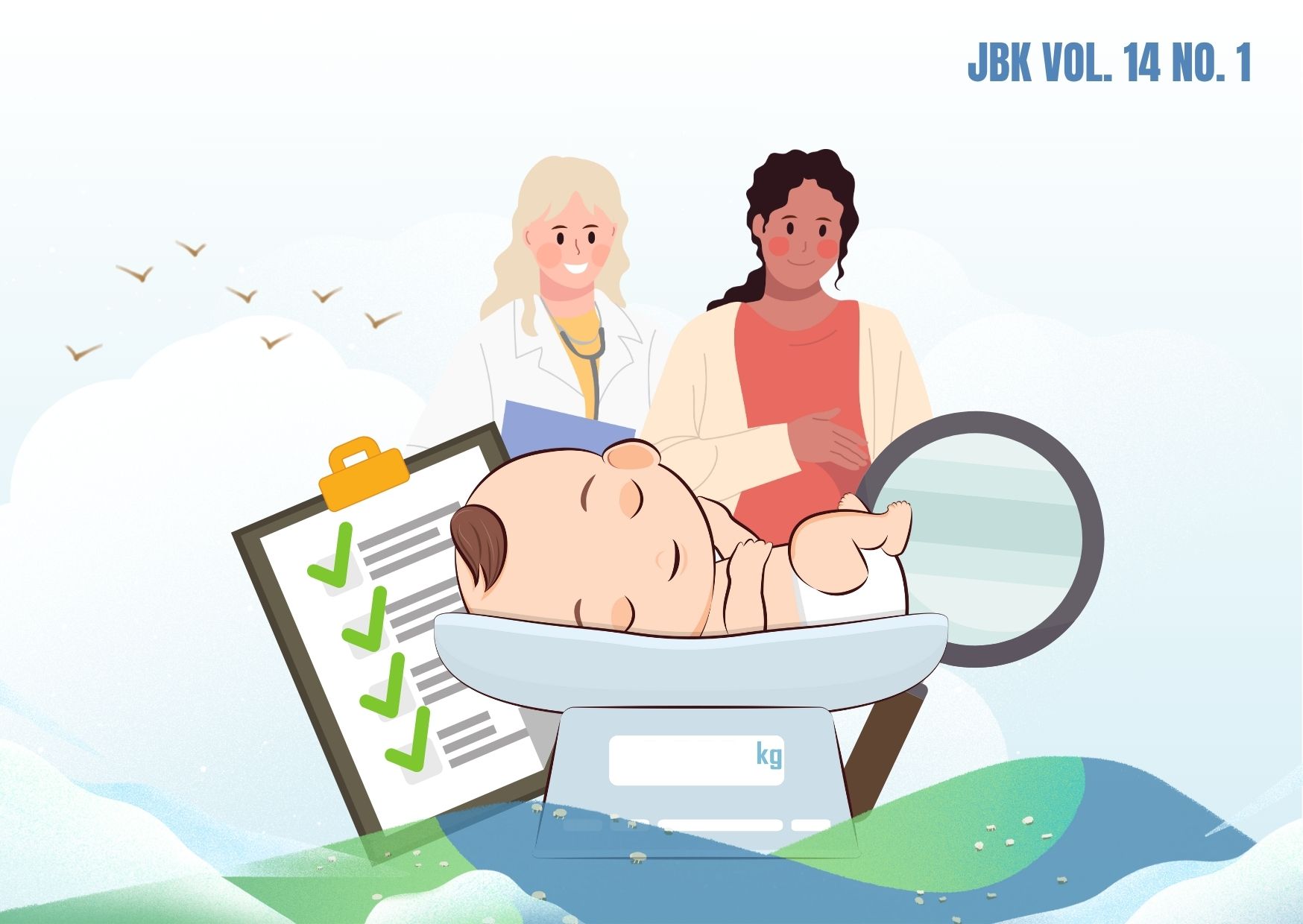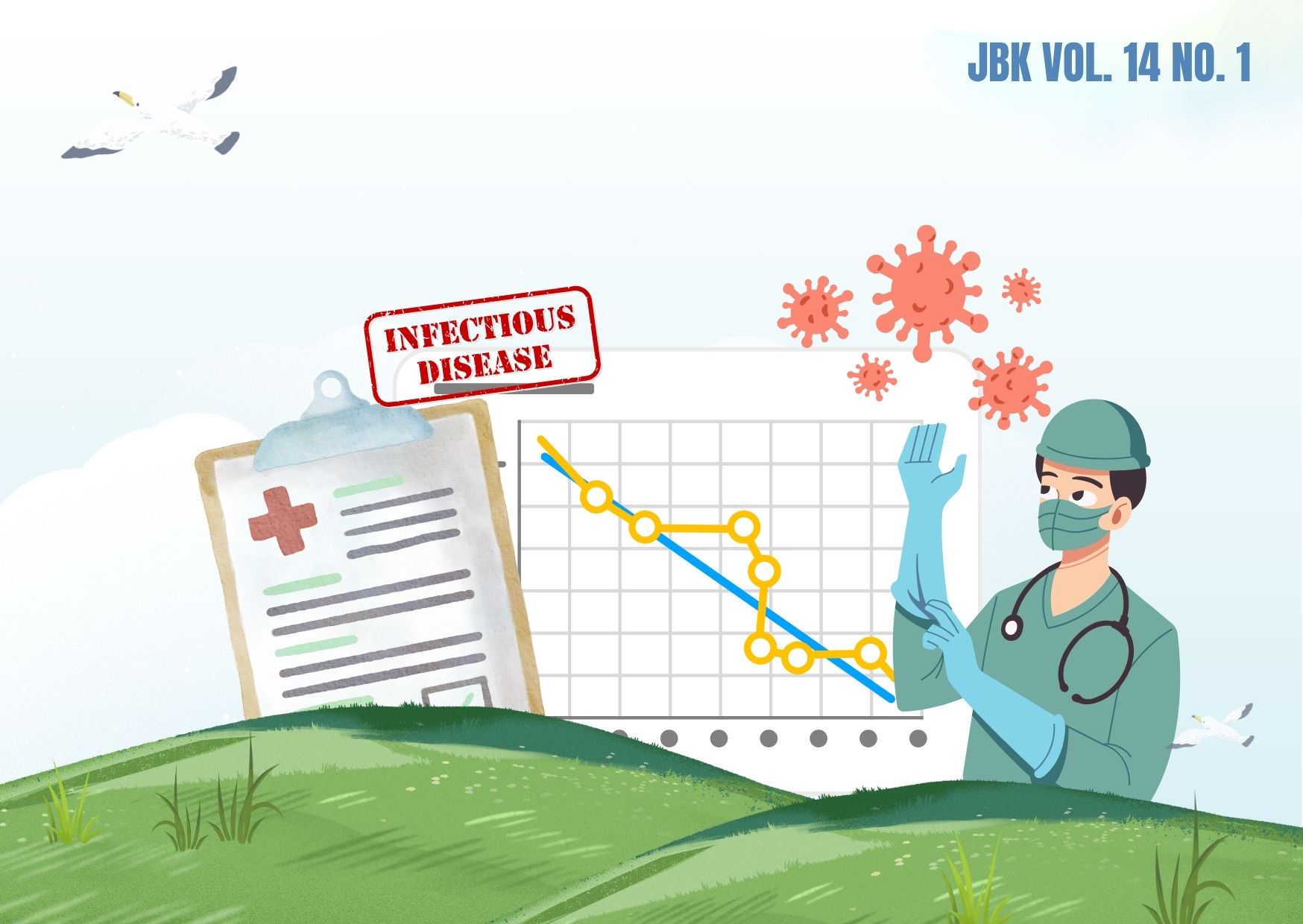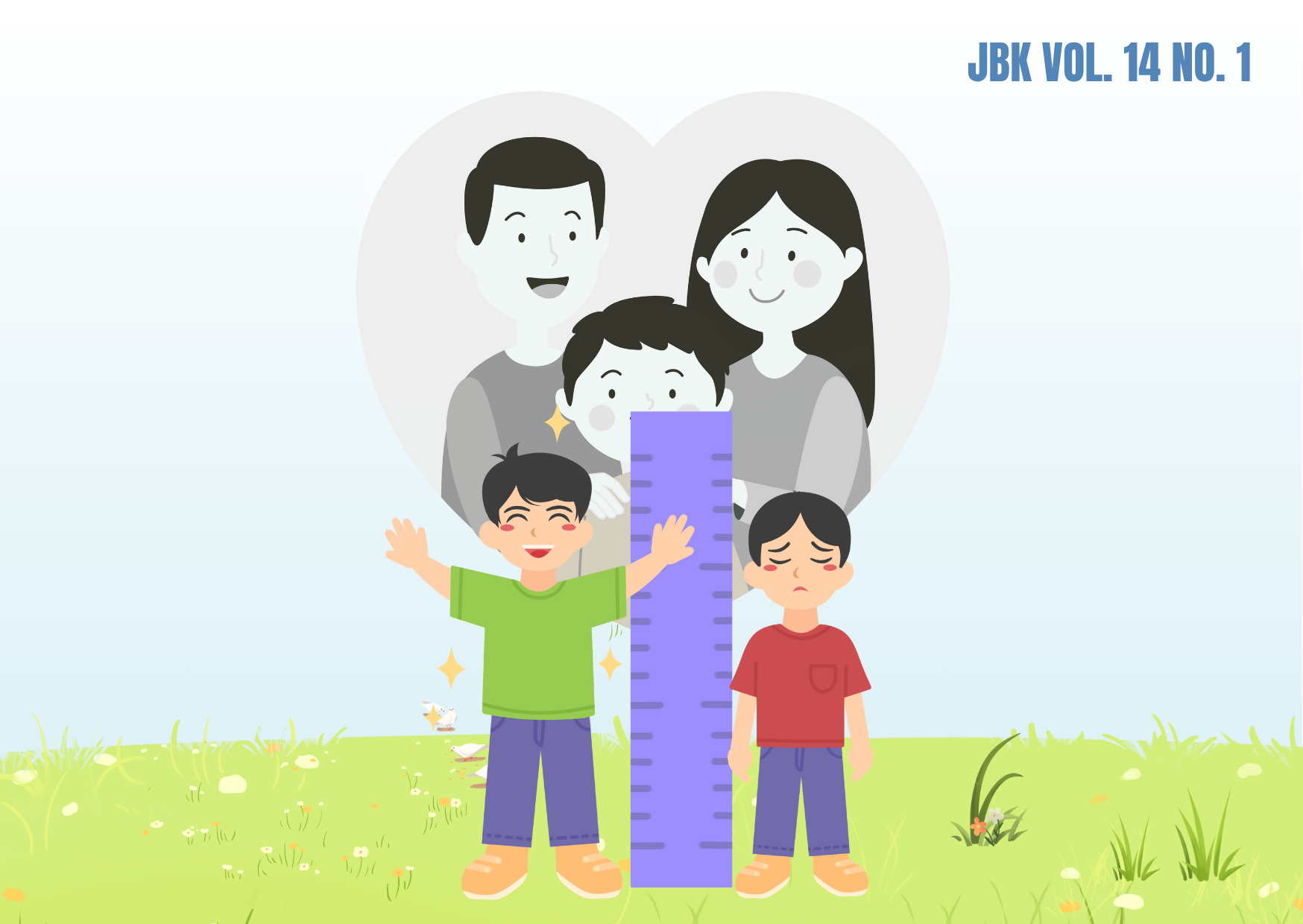DETERMINANTS OF LOW BIRTH WEIGHT: COMPARISON BETWEEN PERCEPTION AND RECORDS USING THE INDONESIAN DEMOGRAPHIC HEALTH SURVEY DATA

Downloads
Measuring birth weight in low resource settings is problematic. Mothers' perception of newborn's size is often used as a proxy. This study examines the correlation between weight measured at birth and the mother's perception of her child's size and compare the determinants of low birth weight (LBW) and small birth size using both measures. This study analyzed the 2017 Indonesian Demographic and Health Survey data and examined the list of determinants associated with birth weight. There was a strong correlation between newborn's weight measured at birth and mother's perception of birth size and a high agreement between LBW and perceived small birth size. Both measures, birth order was a significant child factor, and the number of antenatal care (ANC) visits was an important ANC factor. Maternal education was a significant socioeconomic determinant of LBW, while household wealth and improved household latrine were significant determinants of perceived birth size. Mother's perception of birth size can be used as a proxy measurement for a child's birth weight for programmatic purposes in low resource settings where birth weight was difficult to measure.
UNICEF. Low Birthweight [Internet]. 2023. Available from: https://data.unicef.org/topic/nutrition/low-birthweight/
Organization WH. The old GHO Minerva interface and GHO Athena API are retired [Internet]. 2023. Available from: https://apps.who.int/gho/data/node.main-searo
Badan Pusat Statistik. Profil Statistik Kesehatan 2023 [Internet]. 2023. Available from: https://www.bps.go.id/id/publication/2023/12/20/feffe5519c812d560bb131ca/profil-statistik-kesehatan-2023.html
Philippines Demographic Health Survey. Philippines National Demographic and Health Survey 2017 [Internet]. 2017. Available from: https://www.dhsprogram.com/pubs/pdf/SR253/SR253.pdf
Vilanova CS, Hirakata VN, Buriol VC de S, Nunes M, Goldani MZ, Silva CH da. The Relationship between The Different Low Birth Weight Strata of Newborns with Infant Mortality and The Influence of The Main Health Determinants in The Extreme South of Brazil. Popul Health Metr [Internet]. 2019;17(15). Available from: https://doi.org/10.1186/s12963-019-0195-7
Sahoo S, Kumar P, Swain A, Mishra M, Bishwajit B. Comprehensive Analysis of Stunting Syndrome in Children in Developing Countries: A Comprehensive Review. Research and Reviews in Pediatrics. Res Rev Pediatr [Internet]. 2024;25(1):12–5. Available from: https://doi.org/10.4103/rrp.rrp_4_24
Aryastami NK, Shankar A, Kusumawardani N, Besral B, Jahari AB, Achadi E. Low birth weight was the most dominant predictor associated with stunting among children aged 12–23 months in Indonesia. BMC Nutr [Internet]. 2017;3(16). Available from: https://doi.org/10.1186/s40795-017-0130-x
Badan Perencanaan Pembangunan Nasional Republik Indonesia. Rancangan Teknokratik Rencana Pembangunan Jangka Menengah Nasional 2020 - 2024 : Indonesia Berpenghasilan Menengah - Tinggi Yang Sejahtera, Adil, dan Berkesinambungan [Internet]. 2019. Available from: https://perpustakaan.bappenas.go.id/e-library/file_upload/koleksi/migrasi-data-publikasi/file/RP_RKP/Narasi%20RPJMN%20IV%202020-2024_Revisi%2014%20Agustus%202019.pdf
Abdulmahdi W, Rabadi MM, Jules E, Marghani Y, Marji N, Leung J, et al. Kidney Dysfunction in The Low-birth Weight Murine Adult: Implications of Oxidative Stress. American Journal of Physiology-Renal Physiology. Am J Physiol Physiol [Internet]. 2018;315(3). Available from: https://doi.org/10.1152/ajprenal.00164.2018
Kanda T, Murai-Takeda A, Kawabe H, Itoh H. Low birth weight trends: possible impacts on the prevalences of hypertension and chronic kidney disease. Hypertens Res [Internet]. 2020;4:859–68. Available from: https://doi.org/10.1038/s41440-020-0451-z
World Health Organization. Global Nutrition Targets 2025: Low Birth Weight Policy Brief [Internet]. 2014. Available from: https://iris.who.int/bitstream/handle/10665/149020/WHO_NMH_NHD_14.5_eng.pdf?sequence=2
Khan JR, Bakar KS, Awan N, Muurlink O, Homaira N. Accuracy of Mothers’ Perception of Birth Size to Predict Birth Weight Data in Bangladesh. Matern Child Health J [Internet]. 2024;28:1677–84. Available from: https://doi.org/10.1007/s10995-024-03975-7
Bhattacharyya S, Srivastava A, Roy R, Avan BI. Factors influencing women’s preference for health facility deliveries in Jharkhand state, India: a cross sectional analysis. BMC Pregnancy Childbirth [Internet]. 2016;16(50). Available from: https://doi.org/10.1186/s12884-016-0839-6
Earsido A, Gebeyehu A, Kisi T. Determinants of Long Acting and Permanent Contraceptive Methods Utilization among Married Women in Hossana Town, Southern Ethiopia: A Case - Control Study. J Pregnancy Child Heal [Internet]. 2015;02(03). Available from: https://doi.org/10.4172/2376-127X.1000165
Nisha MK, Raynes-Greenow C, Rahman A, Alam A. Perceptions and Practices Related to Birthweight in Rural Bangladesh: Implications for Neonatal Health Programs in Low- and Middle-income Settings. PLoS One [Internet]. 2019;14(12). Available from: https://doi.org/10.1371/journal.pone.0221691
Palmieri EM, Gonzalez-Cotto M, Baseler WA, Davies LC, Ghesquiere B, Maio N, et al. Nitric oxide orchestrates metabolic rewiring in M1 macrophages by targeting aconitase 2 and pyruvate dehydrogenase. Nat Commun [Internet]. 2020;11(698). Available from: https://doi.org/10.1038/s41467-020-14433-7
Shakya K, Shrestha N, Bhatt M, Hepworth S, Onta S. Accuracy of Low Birth Weight as Perceived by Mothers and Factors Influencing it: a Facility based Study in Nepal. International Journal of Medical Research and Health Sciences. Int J Med Res Heal Sci [Internet]. 2015;4(2). Available from: https://doi.org/10.5958/2319-5886.2015.00051.X
Sebayang SK, J M, Dibley D, J P, Kelly K, Shankar A V., et al. Determinants of Low Birthweight, Small‐for‐Gestational‐Age and Preterm Birth in Lombok, Indonesia: Analyses of The Birthweight Cohort of The SUMMIT Trial. Tropical Medicine and International Health. Trop Med Int Heal [Internet]. 2012;17(8):938–50. Available from: https://doi.org/10.1111/j.1365-3156.2012.03039.x
Alemayehu GM, Chernet AG, Dumga kassahun T. Determinants of child size at birth and associated maternal factor in Gurage zone: Application of ordinal logistic regression analysis. Reseach Sq [Internet]. 2019; Available from: https://doi.org/10.21203/rs.2.11819/v1
Mwanri AW, Hamisi F, Mamiro PS. Accuracy of maternal recall of birth weight and selected delivery complications in Zanzibar. Tanzan J Health Res [Internet]. 2017;19(4). Available from: https://www.cabidigitallibrary.org/doi/pdf/10.5555/20183157526
Nigatu D, Haile D, Gebremichael B, Tiruneh YM. Predictive accuracy of perceived baby birth size for birth weight: a cross-sectional study from the 2016 Ethiopian Demographic and Health Survey. BMJ Journals [Internet]. 2019;9(12). Available from: https://doi.org/10.1136/bmjopen-2019-031986
Khan JR, Bakar KS, Awan N, Muurlink O, Homaira N. Accuracy of Mothers’ Perception of Birth Size to Predict Birth Weight Data in Bangladesh. Methodol Notes [Internet]. 2024;28:1677–84. Available from: https://link.springer.com/article/10.1007/s10995-024-03975-7
Björkegren E, Svaleryd H. Birth Order and Child Health. Work Pap Ser [Internet]. 2017;16. Available from: https://ideas.repec.org/p/hhs/ifauwp/2017_016.html
Mulenga D, Nyirenda T, Nyirenda HT, Mobegi D, Mubita B, Kapesha R, et al. Adequacy of Prenatal Care and its Association with Low Birth Weight in Ndola and Kitwe, Zambia. J Pregnancy Child Heal [Internet]. 2020;03(108). Available from: https://doi.org/10.29011/JPCH-108.100008
Hailu LD, Kebede DL. Determinants of Low Birth Weight among Deliveries at a Referral Hospital in Northern Ethiopia. Biomed Res Int [Internet]. 2018;1–8. Available from: https://pubmed.ncbi.nlm.nih.gov/29850570/
Dubey DK, Nath DC. Measurement issues of low birth weight in India. J Biostat Epidemiol [Internet]. 2017;3(2). Available from: https://jbe.tums.ac.ir/index.php/jbe/article/view/171
Unisa S, Dhillon P, Anand E, Sahoo H, Agarwal PK. Data quality of birthweight reporting in India: Evidence from cross-sectional surveys and service statistics. SSM - Popul Heal Sci Direct [Internet]. 2022;19. Available from: https://doi.org/10.1016/j.ssmph.2022.101220
Copyright (c) 2025 Jurnal Biometrika dan Kependudukan

This work is licensed under a Creative Commons Attribution-NonCommercial-ShareAlike 4.0 International License.
Copyright©2022 Jurnal Biometrika dan Kependudukan (Journal of Biometrics and Population)
This work is licensed under a Creative Commons Attribution-NonCommercial-ShareAlike 4.0 International License.
1. Copyright of all journal manuscripts is held by the Jurnal Biometrika dan Kependudukan.
2. Formal legal provisions to access digital articles of the electronic journals are subject to the provision of the Creative Commons Attribution-ShareAlike license (CC BY-NC-SA), which means that Jurnal Kesehatan Biometrika dan Kependudukan to keep, transfer media/format, manage in the form of databases, maintain, and publish articles.
3. Published manuscripts both printed and electronic are open access for educational, research, and library purposes. Additionally, the editorial board is not responsible for any violations of copyright law.


































